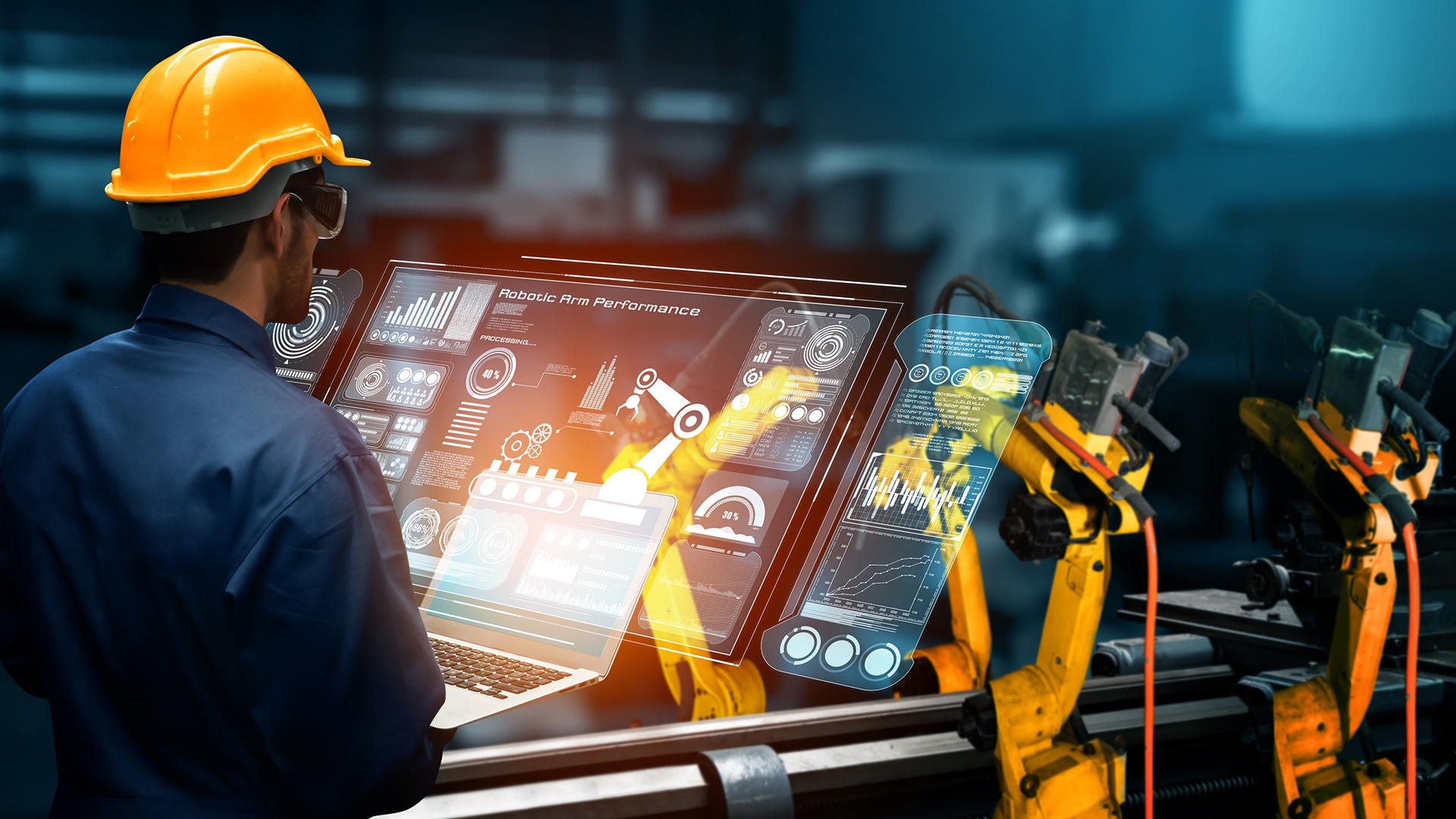
„Svet nezadrživo srlja u napredak.“
Sećate se ove replike iz domaćeg filma? Tada je bilo reči samo o Srbiji, a ne o celom svetu. Scena se odnosila na mogućnost telefoniranja i prenošenja glasa od Beograda do Niša krajem 19. veka.
Skoro 130 godina kasnije nalazimo se na još jednoj prekretnici. Ako je u pomenutom filmu bilo reči o začetku telekomunikacija i elektrifikaciji, danas pričamo o digitalizaciji i automatizaciji. Globalna ekonomija, borba za tržište i sve veća trka ka unapređenju poslovanja, dovela je do eksponencijalnog rasta u domenu IT industrije. Slobodno možemo reći da je IT industrija trenutno pokretač svetske ekonomije i da se sve ostale industrije delom oslanjaju na IT industriju. Kako to? Odgovor se prosto nameće iz one replike iz filma. Izumom telefona, pored razvoja telekomunikacija, razvile su se i ostale industrije. Umesto komunikacije pismima i telegramima, prešlo se na telefonsku komunikaciju, čime se značajno ubrzao proces nabavke, proizvodnje i na kraju prodaje nekog proizvoda ili usluge. Na isti način današnji razvoj IT industrije pomaže da se neke ustaljene radnje u procesima raznih industrija automatizuju i digitalizuju, čime se dosadni i zamorni procesi prebacuju sa ljudi na „robote“. Procesi koji iziskuju opasne i rizične akcije po ljude takođe mogu da budu automatizovani i te iste radnje može da uradi tehnika umesto njih, čime se smanjuje broj nesrećnih slučajeva, a radna mesta postaju sigurnija.
Naravno, ne postoji samo IT. IT postaje neizostavni deo industrija, ali za proizvodnju struje će se brinuti inženjer iz energetske oblasti, za proizvodnju hrane tehnolog, a za organizaciju prevoza će nam biti potreban saobraćajni inženjer. Kontrola i upravljanje svih ovih procesa radi se preko sklopa hardvera i softvera pa su za takve sisteme isključivo bili zaduženi ljudi iz tih branši i jednim imenom svi rade u okviru „Operation Technologies“ – skraćeno OT. Sve ovo je zaostavština 3. industrijske revolucije koja se desila šezdesetih godina 20. veka i koja je značajno automatizovala sve procese kontrole i upravljanja u industriji. Mana takvih sistema je bila zatvorenost sistema, korišćenje propriatery protokola u komunikaciji između hardvera i softvera, skupa instalacija i održavanje, nefleksibilnost za unapređenja i proširenja. Novo doba, 21. vek sa sobom donosi i 4. industrijsku revoluciju koja lagano transformiše i unapređuje industrije. Bitan faktor za uvođenje IT-a u industriju je saradnja IT-a sa OT eksperatima, a pošto IT sa sobom donosi i bezbednosne rizike, treći ključni faktor u pravljenju novog ekosistema je cyber security. Novi ekosistem je jedino moguće napraviti koherencijom ove tri celine, gde će svaka od strana imati svoja zaduženja. Glavnu reč će imati ljudi koji kreiraju procese, a to je naravno kao i do sada – OT. IT će morati da razume procese i servise, kako bi ih što kvalitetnije preneli, obradili i prezentovali. I na kraju, cyber security je tu da obezbedi pravne i tehnološke sigurnosne mehanizme, kao i procedure kojima bi se sprečili gubici nastali usled napada i ljudskog nemara.
Za uvođenje jedne industrijske mreže postoje brojni izazovi:
- Sigurnost – Industrijske mreže se suočavaju sa brojnim bezbednosnim izazovima, kao što su cyber napadi, curenje podataka i neovlašćeni pristup kritičnim sistemima. Zaštita ovih mreža zahteva robusne mere bezbednosti, uključujući firewall-ove, kriptovanje i kontrolu pristupa;
- Interoperabilnost – Industrijske mreže često koriste različite tehnologije, protokole i standarde, što može da stvori izazove u postizanju besprekorne interoperabilnosti između različitih sistema. Ovo može da dovede do problema sa integracijom, kvarova u komunikaciji i drugih problema koji mogu da utiču na produktivnost;
- Skalabilnost – Očekuje se da će industrijske mreže da rastu u veličini i složenosti, što može da stvori izazove u njihovom upravljanju, praćenju i održavanju. Kako se broj uređaja i sistema povezanih na mrežu povećava, postaje sve teže osigurati pouzdan i efikasan rad;
- Pouzdanost – Industrijske mreže moraju da budu visoko pouzdane da bi se obezbedio kontinuiran rad i sprečio skup zastoj. Svaki kvar ili prekid u mreži može da dovede do kašnjenja proizvodnje, gubitka prihoda i drugih negativnih uticaja;
- Tradicionalni sistemi – Mnoge industrijske mreže se i dalje oslanjaju na zastarele sisteme i opremu, koje može da bude izazovno nadograditi ili zameniti. Ovo može da stvori probleme sa kompatibilnošću i poveća rizik od pretnji cyber bezbednosti zbog zastarelog softvera i hardvera;
- Obrada podataka – Industrijske mreže generišu ogromne količine podataka, kojima mora efikasno da se upravlja kako bi se podržalo donošenje odluka zasnovano na podacima. Međutim, upravljanje ovim podacima može da bude izazovno zbog složenosti mreže i potrebe za analizom i izveštavanjem u realnom vremenu.
Da bi se odgovorilo na ove izazove potrebno je da se uključe moderne tehnologije poput veštačke inteligencije, big data analitike, cyber security mehanizmama, modernih SD-WAN mreža.
I pored uloženog truda i tehnološke želje često dolazi do grešaka. Da li ste znali da se mnogi industrijski sistemi instaliraju i upravljaju na daljinu od strane dobavljača? Mnogi OT inženjeri zapravo ne znaju šta se dešava na platformi ili pretpostavljaju da se sâm prodavac brine o bezbednosti svojih proizvoda. Ova pretpostavka dovodi do mnogih grešaka i ranjivosti unutar OT mreže. Iako OT profesionalci misle da njihovi dobavljači obezbeđuju svaki OT uređaj, stvarnost je mnogo gora. Sigurnosne zakrpe se često ne instaliraju, a default kredencijali se često koriste u više sistema. OT profesionalci moraju da se brinu o zaštiti podataka i intelektualne svojine. Oni bi trebalo da integrišu tehnološka rešenja u proizvodni proces. Njima treba povezan i sažet lanac snabdevanja i vidljivost širom organizacije. Na IT ekspertima je da pomognu OT ekspertima u ispunjenju ovih zahteva.
Industrije koje su u tranziciji ka ovom novom ekosistemu su brojne. Od Smart City rešenja, elektroenergetskih sistema, naftnih kompanija, transportne industrije, magacini, distributivni centri, komunalna preduzeća, aerodromi i luke imnoge druge. Sve ove industrije kao zajedničku tačku imaju želju za unapređenjem i povećanjem produktivnosti.
I da se vratim na početak. ”Svet nezadrživo srlja u napredak.” Da li je taj napredak nužno dobar? U nekim stvarima ne. Ali svakako je deo našeg vremena kao što je izum telefona bio deo kraja 19. veka. Za nekih 10 – 15 godina ćemo videti prave rezultate ovog tehnološkog buma. Nadamo se najboljem.



